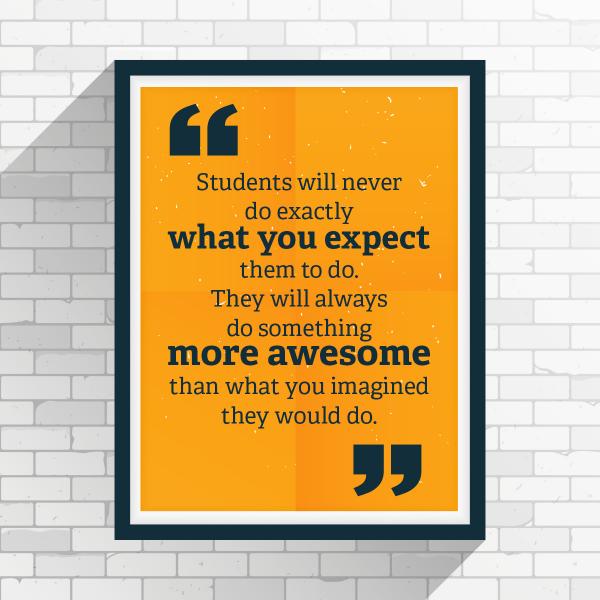32 Involving Students
Open pedagogy is the practice of engaging with students as creators of information rather than simply consumers of it. It’s a form of experiential learning in which students demonstrate understanding through the act of creation. The products of open pedagogy are student created and openly licensed so that they may live outside of the classroom in a way that has an impact on the greater community. These types of projects frequently result in the creation of OER.
Practitioners of open pedagogy embrace collaboration, student agency, and authentic audiences while recognizing the differences in privilege and progress that impact how students balance the benefits of sharing and a need for privacy. This open educational practice challenges traditional teaching roles and has the power to transform the educational experience for both teachers and students.
Students can also contribute to an OER by identifying typos, suggesting examples, curating primary source material, drafting case studies, drawing illustrations, locating openly licensed image for reuse, and more. Hypothesis can be used by students to annotate the text both before and after the OER’s publication. Sometimes extra credit is awarded to students who contribute improvements to the text. However, students should always be given agency over how (or whether) their work is shared publicly. A copyright agreement and/or MOU is required for all student contributors who submit original content to the work, and they should be acknowledged in the book as appropriate.
Unlocking the Classroom
“Unlocking the Classroom: Maximizing the Potential of Open Educational Resources” was presented by David Wiley at UTA Libraries in June 2017. The recap below was originally published by Michelle Reed in UTA Libraries’ blog.
David Wiley addresses challenges of OER adoption, discusses the transformational experience of creating renewable assignments that allow students to create and openly share content, and predicts what lies ahead for open education in this recorded presentation.
“Unlocking the Classroom: Maximizing the Potential of Open Educational Resources” began with a definition of “open.” Those new to OER sometimes conflate open resources and public resources. Though both are free for the end-user, creators of resources that are truly open also grant users the permission to retain, reuse, revise, remix, and redistribute the content. After establishing this definition, David discussed renewable assignments/assessments and their impact on teaching and learning. Here are five takeaways:
- The vast majority of the assignments we ask students to complete are disposable. The ultimate destination for this kind of assignment is the trash or, as David noted as the best-case scenario, a recycle bin. He estimates that undergraduate students in the United States spend about 40 million hours each year producing work that is promptly tossed away after it is graded. This approach may suggest to students that their work is not valued.
- Renewable assignments, on the other hand, offer an opportunity for student work to live beyond the classroom in a way that adds value to the world. The key to renewable assignments is the integration of open licensing. When we remove the restrictions of copyright, we can think about teaching and learning in new ways. An emphasis on sharing student work (rather than disposing of it) allows teachers, future students, and others to build on, revise, and improve student-generated content.
- When students are asked to share their work openly, the way they approach their coursework changes. Students consistently report that they are motivated to spend more time on renewable assignments because they know their work will make a difference for someone else, and they tend to worry less about their grades. Engagement skyrockets. Learning becomes a genuinely fun and collaborative activity.
- Teachers sometimes assume that only graduate-level or advanced students are capable of engaging meaningfully with renewable assignments. David demonstrated that this assumption is false by sharing multiple examples from graduate, undergraduate, and middle school levels. He emphasized that every group of students can do this kind of work if given the right opportunity.
- David warned against dictating that students openly license their work. Rather, teachers interested in incorporating renewable assignments in their courses are encouraged to discuss licensing with students and to provide alternate options for students who do not wish to share their work. This provides an opportunity to have a conversation with students about their digital identities and about how what they share online shapes the way they are perceived by others.


